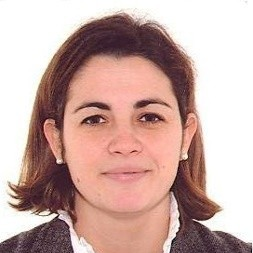State-of the-Art, Challenges and Perspectives in Hydraulic Machines and Systems
A special issue of Energies (ISSN 1996-1073).
Deadline for manuscript submissions: closed (10 December 2021) | Viewed by 43474
Special Issue Editors
Interests: computational fluid dynamics; experimental investigations; hydrodynamics and cavitation in hydraulic machinery; swirling flow control
Special Issues, Collections and Topics in MDPI journals
Interests: hydraulic machines; cavitation; swirling flows; shape optimization; CFD; flow control; fluid–structure interaction
Interests: hydraulic machines; unstable behavior; CFD; design optimization; experimental investigation
Special Issues, Collections and Topics in MDPI journals
Interests: design and optimization of components in hydraulic machinery; multistage pump-turbines for high head applications; lifetime assessment
Special Issues, Collections and Topics in MDPI journals
Interests: fluid–structure interactions in hydraulic turbines; system dynamics and generation flexibility
Special Issue Information
Dear Colleagues,
Modern hydraulic machines and systems are now facing new challenges associated with the variable demand on the energy market as well as limited energy storage capabilities. A great flexibility is required in operation over an extended range of regimes far from the best efficiency point. As a result, unsteady and transient phenomena occur in the operation of hydraulic machines and systems, diminishing their lifetime. The research topics in this Special Issue focus on: (i) the theoretical, numerical, and experimental investigations associated to the unsteady and transient phenomena developed in hydraulic machines, equipment, and systems, (ii) single-, two-, and multiphase phenomena in hydraulic machines and systems, (iii) innovative technologies and new concepts in hydraulic machines and systems to assess and to extend their lifetime, and (iv) passive, semiactive, and active control techniques applied to hydraulic machines to improve their performances.
Dr. Sebastian Muntean
Prof. Dr. Pavel Rudolf
Prof. Dr. Giovanna Cavazzini
Dr. Eduard Doujak
Prof. Dr. Pål-Tore Selbo Storli
Guest Editors
Manuscript Submission Information
Manuscripts should be submitted online at www.mdpi.com by registering and logging in to this website. Once you are registered, click here to go to the submission form. Manuscripts can be submitted until the deadline. All submissions that pass pre-check are peer-reviewed. Accepted papers will be published continuously in the journal (as soon as accepted) and will be listed together on the special issue website. Research articles, review articles as well as short communications are invited. For planned papers, a title and short abstract (about 100 words) can be sent to the Editorial Office for announcement on this website.
Submitted manuscripts should not have been published previously, nor be under consideration for publication elsewhere (except conference proceedings papers). All manuscripts are thoroughly refereed through a single-blind peer-review process. A guide for authors and other relevant information for submission of manuscripts is available on the Instructions for Authors page. Energies is an international peer-reviewed open access semimonthly journal published by MDPI.
Please visit the Instructions for Authors page before submitting a manuscript. The Article Processing Charge (APC) for publication in this open access journal is 2600 CHF (Swiss Francs). Submitted papers should be well formatted and use good English. Authors may use MDPI's English editing service prior to publication or during author revisions.
Keywords
- Theoretical, numerical and experimental investigations in hydraulic machines, equipment, and systems
- Unsteady and transients phenomena in operation
- Single-, two-, and multiphase phenomena in hydraulic machines and systems
- Innovative technologies and new concepts in hydraulic machines and systems
- Lifetime time assessment of the hydraulic machines and equipment
- Innovative technologies and new concepts in hydraulic machines and systems
- Passive, semiactive, and active control techniques in hydraulic machines
Benefits of Publishing in a Special Issue
- Ease of navigation: Grouping papers by topic helps scholars navigate broad scope journals more efficiently.
- Greater discoverability: Special Issues support the reach and impact of scientific research. Articles in Special Issues are more discoverable and cited more frequently.
- Expansion of research network: Special Issues facilitate connections among authors, fostering scientific collaborations.
- External promotion: Articles in Special Issues are often promoted through the journal's social media, increasing their visibility.
- e-Book format: Special Issues with more than 10 articles can be published as dedicated e-books, ensuring wide and rapid dissemination.
Further information on MDPI's Special Issue polices can be found here.







